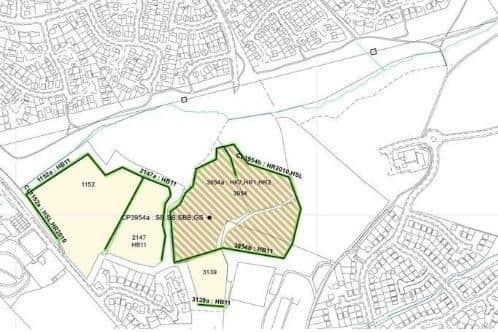Hundreds campaign to save Sheffield nature and heritage trail from destruction
and live on Freeview channel 276
Owlthorpe residents raised alarm after learning of new plans to build 150 homes in the Moor Valley opposite Diamond Cottages, in south east Sheffield, including on the grassland grazing project – a wildlife sanctuary which forms part of the award-winning heritage and nature trail.
Michael Meredith, of Ecological Owlthorpe who launched the petitions, said it would completely destroy the site which is home to dozens of wildlife species.
He said: “It is very disappointing.
Advertisement
Hide AdAdvertisement
Hide Ad

“When first developed, our oasis received government funding under Natural England higher level stewardship agreement.
“With 12,243 trees and hedgerow plants planted, also 64,000 bulbs and 1,500 square metres of wildflower seed sown, our oasis is a wildlife sanctuary.
“The local planning authority wishes to destroy our open space, used and loved by the local community.”
Funding was awarded to manage and safeguard the grasslands – where highland cattle, alpacas and other animals graze – for future generations to enjoy.
Advertisement
Hide AdAdvertisement
Hide Ad

Mr Meredith launched two petitions trying to stop the development, one aimed at the council and the other aimed at the parliamentary ombudsman.
There was concern from campaigners and councillors that wider development plans for Owlthorpe were split into several parts such as this after being refused, to avoid an ecology impact assessment and therefore make it easier to get permission.
During a local area committee meeting, a council representative said the site was greenfield and the authority was under pressure to maximise all opportunities to deliver new homes on previously developed land.
Sheffield Council was contacted for comment.
History and nature of Owlthorpe grasslands
Mr Meredith provided total numbers of species spotted in each category along the trail which included: 96 different vertebrates, 78 types of birds, 16 mammal species, one amphibian, one reptile, 295 invertebrates – including 95 butterflies and moths – and 452 flora species.
The area appears in the 1086 Doomsday Book and it was once where sickles and scythes were manufactured to support the farming industry.